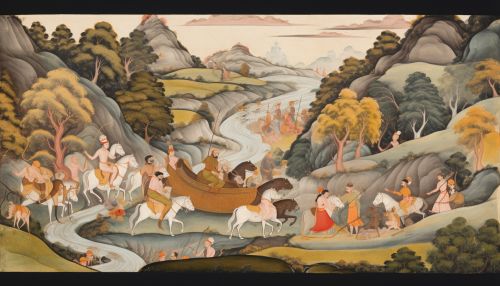Bhagavata Purana
Origins and Dating
The Bhagavata Purana, also known as the Śrīmad Bhāgavatam, is one of the eighteen Mahāpurāṇas, a genre of ancient Indian scriptures. The text is a significant part of the Hindu tradition, particularly within the Vaishnava sect. The exact origins and dating of the Bhagavata Purana are difficult to determine. It is traditionally attributed to the sage Veda Vyasa, who is also credited with compiling the Mahābhārata. However, most scholars agree that the text, as it exists today, was likely composed between the 8th and 10th centuries CE.


Structure and Content
The Bhagavata Purana is composed in Sanskrit and is divided into twelve books or Skandhas, with over eighteen thousand verses. The text presents a blend of cosmology, theology, mythology, legend, and music. It is renowned for its narrative of the life, exploits, and teachings of Lord Krishna, particularly his childhood and youth, which is detailed in the tenth book. The text also discusses topics such as creation and cosmology, legends of legendary kings and sages, and tales of divine incarnations or Avatars.
Themes and Philosophy
The Bhagavata Purana is not just a literary work but also a significant theological and philosophical treatise. It expounds on a variety of themes, including dharma (duty/righteousness), karma (action and consequence), and bhakti (devotion), among others. The text is particularly noted for its emphasis on bhakti, specifically towards Lord Krishna. It presents a form of monotheism, where Krishna is viewed as the supreme deity, and all other gods and goddesses are considered his manifestations or aspects. The Bhagavata Purana also delves into the philosophy of Vedānta, discussing concepts such as Brahman (the ultimate reality), Atman (the individual soul), and Moksha (liberation).
Influence and Legacy
The Bhagavata Purana has had a profound influence on Indian culture and spirituality. Its narratives have inspired a wealth of visual and performing arts, including painting, sculpture, dance, theatre, and music. The text has also played a crucial role in the development of bhakti movements across India, shaping religious practices and community rituals. Its teachings continue to be relevant, offering spiritual guidance and philosophical insights to its readers.
